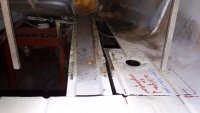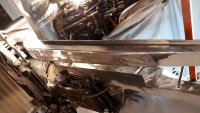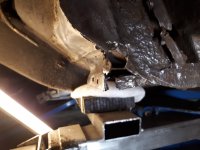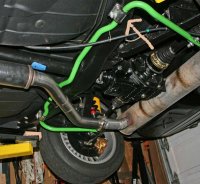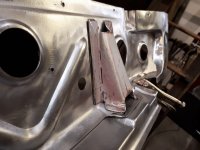quote from autokunst: "In the rear, the lift pad was under the rocker jack point and also picked up a bit of the rear subframe arm - so a dual approach".
Be carefull lifting it your car by the rockers/ sills! Likely we can spot exactly where your shop lifted your car...
In OEM condition, the rockers are made of multiple layers, including the outer decorative cover on them. Both the outer sill (structural&welded) and the decorative cover (screwed on) stick out BELOW the inner sill. If you try to lift the car by putting something under the flange , then the first thing that happens before your coupe is raised, is that you'll sqaush your outer sill & rocker cover into the inner sill.
See the pics:
First pic shows how the rear left subframe mounting point. The sill construction is a bit vague, but you can just see the white inner sill, and the yellow zinced outer rear quarter panel /skin. This yellow part curves under and around the white vertical flange. Also the drain hole see here makes this curve.
On all 4 corners of the sill, it has this construction; the 4 quarter panels contain this curvature on the bottom.
Below the door, there are no quarter panels, so the outer structural sill that has this curve feature. In the pic below you're looking at the right sill & A-pillar just . Notice how on the left the flange is part of the outer structural, welded sill, and how it tucks under the body. Just right of the jack point, the panel ends. This is where the front quarter panel should meet up. See the ~5 mm (1/4inch) difference in height comparing the flange left and right of the jack point ?
Now, having explained how the sills are constructed, you can image what happens if you place something under this flange: The flange will be pushed up 5mm (1/4 inch) until it touches the 2 inner sill layers. Perhaps even closing the drain holes if it's a bad day.
I've seen plenty of the pinch marks in for sale threads. let me see if I can dig some up...
Edit: here you go. Something went wrong with this sill. Notice the flange line isn't straight anymore? (ignore the offset of the pickup point & the opening in the decorative sill )

